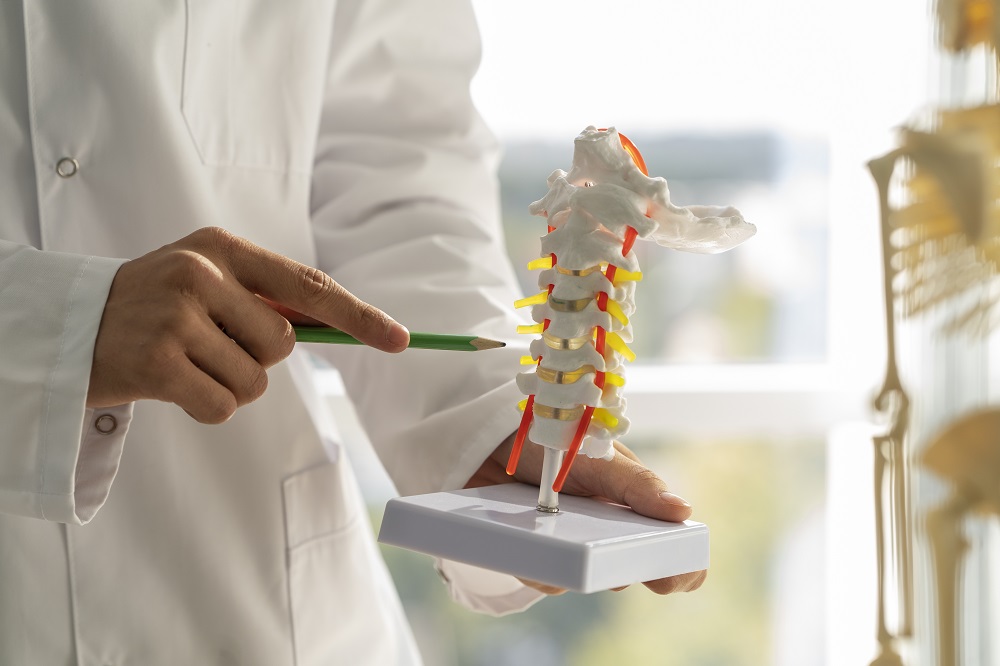A spinal cord injury occurs when the spinal cord, a crucial part of the central nervous system that transmits signals between the brain and the rest of the body, is damaged. These injuries can be partial or complete, and can cause anything from loss of sensation to total paralysis in different parts of the body, depending on the severity and location of the damage.
Treatment for spinal cord injuries varies greatly depending on the severity of the injury, the patient’s age, and other health factors. Below, we explain the most common and effective treatments, ranging from surgical options to neurological rehabilitation.
Surgery for spinal cord injuries
In some cases, surgery is necessary immediately after the injury, especially if bone fragments, disks, or hematomas are compressing the spinal cord. Surgery can help stabilize the spine and prevent further damage. Although it does not always guarantee a full recovery, it can be an essential first step in preventing long-term complications.
Medication and Pharmacological Treatments
After an injury, inflammation can make the damage worse. In the first few hours after the injury, doctors often give anti-inflammatory medication to reduce this inflammation. In some cases, steroids such as methylprednisolone are used , which, given early, can limit the damage and improve the chances of recovery.
Physical and Neurological Rehabilitation
Rehabilitation is a crucial part of the recovery of anyone with a spinal cord injury. Through different types of therapies, patients can learn to optimize their motor skills, improve their strength, and adapt to new limitations. Here are the most effective therapies:
- Physical Therapy : This involves specific exercises that help improve muscle strength and mobility. Physical therapists work with the patient to retrain muscles that still function and teach how to use supportive equipment such as wheelchairs or braces.
- Occupational Therapy : Focuses on helping patients return to performing everyday tasks, such as dressing, eating, and using electronic devices. This therapy is essential to regaining independence in daily life.
- Neurological Rehabilitation Therapy : Specially designed for people with injuries to the nervous system, this therapy helps to restore damaged neural connections. Through repetitive exercises, the brain and spinal cord attempt to “relearn” lost functions, promoting neuroplasticity.
Therapy with Advanced Technologies
In recent years, technology has opened up new opportunities for those who have suffered a spinal cord injury. Some of the most notable advances include:
- Exoskeletons : These robotic devices allow paralyzed people to walk again with the help of external support. Although the use of exoskeletons is still in development, they have already shown promising results in improving mobility and posture.
- Functional Electrical Stimulation (FES) : This technique uses small electrical impulses to stimulate muscles and help move the limbs. Although it is not a cure, FES can significantly improve motor function and muscle strength in some patients.
- Virtual Reality : Some clinics are beginning to use virtual reality to simulate movements and exercises that help train the brain and body in a safe and controlled environment.
Improving Quality of Life: Beyond Medical Treatments
In addition to medical treatments and therapies, it is important to consider other key aspects that can influence the quality of life of a person with a spinal cord injury.
A spinal cord injury affects not only the body, but also the mind. Depression and anxiety are common in patients facing such radical changes in their daily lives. Psychological support can make a big difference, helping patients manage stress and adapt to their new reality.
Home and Community Adaptations
To make life easier for people with spinal cord injuries, it is essential to adapt their environment. This includes installing ramps, accessible bathrooms, and using devices that allow them to communicate or move more easily. In addition, many communities have social integration programs that help patients maintain an active life and participate in social activities.
Nutrition and Personal Care
Good nutrition is key to recovery from spinal cord injury. Patients often require specialized diets that promote cell regeneration and prevent complications such as pressure ulcers. Additionally, self-care, such as maintaining good hygiene and weight control, is crucial to avoid secondary complications.
Is a Full Recovery Possible?
Although a spinal cord injury can dramatically change a person’s life, advances in treatment and rehabilitation have greatly improved recovery prospects. Not everyone regains full motor function, but with proper treatment, many can lead full and productive lives.
The road to recovery can be long, but the combination of surgery, rehabilitation, and advanced technologies can make a big difference. It is essential to begin treatment as soon as possible and seek the help of specialized professionals who can guide you through each step of the process.
A spinal cord injury is not the end. While it is certainly a huge challenge, current treatments, from surgery to neurological rehabilitation therapies and innovative technologies, have given hope to millions of people around the world. By understanding the options available and taking a proactive approach, people with spinal cord injuries can significantly improve their quality of life. If you are in this situation or know someone who is, remember: rehabilitation and the right support are key to returning to a full life.
Leave us your data to start your treatment







